Into its next generation, the Moto G now brings waterproofing and a bump up in specifications. But is it enough?
When it was launched last year, the 2nd generation Moto G did a commendable job of serving the mid-level Android phone segment. This time around, Motorola reprises this popular smartphone as it enters its 3rd generation, now with the mandatory 4G wireless, better cameras, a notched-up processor and built to take on the country’s monsoon.
This new phone is built around the proven Snapdragon 410 mobile platform that brings 4G capability, quad-band GSM, a 13 megapixel main camera and 5 megapixel front camera. Out of the box this 5-inch phone feels very comfortable in the hand, especially with the textured back that proves to be grippy. The IPS screen is vivid, with good viewing angles and graphics that are as sharp as 294 ppi can deliver.
The Moto series of phones have always vaunted the ‘pure’ Android version, implying no addition of third party tools and add-ons that can potentially bog down a phone. The installed Lollipop 5.1.1 proved to be butter smooth with everything from the UI to application launches being served up enthusiastically. This phones comes in two variants: 1GB of RAM with 8GB of internal storage, and 2GB of RAM with 16GB of internal storage. At a meagre Rs 1,000 differential, it’s really a no brainer which of the two is more bang for the buck.
Up from the previous generation
Scoring over its predecessor, this phone also brings 4G support in its dual Micro SIMs--something that should pan out in the near future with telecoms already starting to roll out their LTE services en masse. Par for the course is Bluetooth 4.0 and Wi-Fi 802.11 b/g/n (although the speedier, newer-generation ‘ac’ WiFi spec would have been much nicer.)
Perhaps the most welcome addition in this phone is the IPX7 protection rating: it is designed to be water resistant, submerged for up to 30 minutes at a depth of 1 meter. Which means it can easily survive a dousing in the rain or even an accidental free fall into a bucket of water. This particular lifesaving feature should hopefully start a trend among its peers.
Continuing from its predecessor, the new Moto G has several features built into the UI that makes the phone easier to use, among them gestures for quickly launching often-used apps. For example, holding the phone and twisting your wrist a couple of times fires up the camera so you don’t miss that photo op. Similarly, a double chop toggles the flashlight on and off. These inclusions aren’t groundbreaking, but it certainly brings an added dimension of convenience.
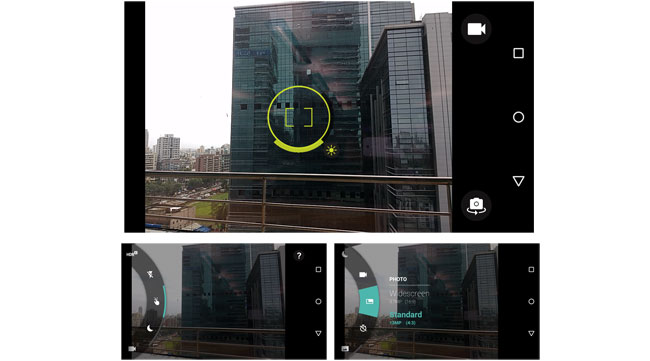
On photography
The camera was quick to respond, and the rotary dial that swipes in from the left edge lends quick access to changing photo quality, HDR/Landscape modes, flash settings, timer and the like. The focusing reticle in the viewfinder also has concentric dial that quickly lets you change dial the scene exposure, and dragging the entire reticle to another area causes the camera to refocus on the scene.
The camera doesn’t have any of those ‘beautification’ modes or photo effects, which is a downer if you’re into that sort of thing. But if you’re looking a pure camera smartphone experience, this phone does a fair job--nothing too spectacular though. From close-up indoor shots to brightly lit outdoor scenes, the image quality from its 13MP primary camera was tonally balanced and sharp. A strange thing we noticed, though, was the final captured image being slightly darker compared to what is seen in the viewfinder.
The 5MP front camera also turned out decent shots, albeit with the barrel distortion that is inherent to virtually all front shooters, which tends to make close up portraits jowlier than natural. But the wide angle does make for great group selfies.

Another peeve we had was with the user interface adopting on-screen buttons instead of touch buttons on the phone frame itself: in most applications about 7.5 percent of the screen is forfeited as a result. The only time you can use the entire screen is when an app specifically runs in fullscreen mode, such as YouTube or an image viewer.
Our takeaway
With the 8 to 12K smartphone price band being so immensely competitive, it’s interesting to see how this phone slots into the larger scheme of things: stacked up against competing devices like the similarly-sized Xiaomi Mi 4i or the larger Lenovo K3 Note, it’s clear that this phone doesn’t trump on specifications (it is overshadowed on resolution, processing speed and battery capacity despite costing more than its ilk.) So if it’s a pure Android experience you are after, with waterproofing, in a comfortable 5-inch form factor, this phone does cut it. But if it’s more bells, whistles and silicon specifications you need, there are numerous other alternatives to consider.
What we liked: Waterproofing, quick and snappy pure Android experience, no-frills but effective camera
What we didn’t: On-screen buttons eat away screen real estate, should have had better specifications for the price
Key specs
Moto G 3rd Generation (XT1550)
- Network: GSM 850 / 900 / 1800 / 1900, LTE (1, 3, 7, 8, 28, 40)
- SIM: Dual SIM
- Screen: 5-inch IPS, 720x1280 resolution (~294 ppi pixel density,) Corning Gorilla Glass 3
- OS: Lollipop 5.1.1 (pure Android)
- Key hardware: 1.4GHz Quad-core Snapdragon 410 processor, 1GB RAM, 8GB internal (expandable to 32GB via SD card)
- Camera: 13MP (f/2.0) primary, 5MP front
- Wireless: 802.11 b/g/n, Bluetooth 4.0
- Weight: 155 gms
- Battery: 2470mAH
Price: Rs 11,999 (1GB RAM, 8GB internal storage) / 12,999 (2GB RAM, 16GB internal storage)
![submenu-img]() Major conglomerate at risk after Rs 4,000 crore deal; Gruner Renewables' promoter arrested for fraud
Major conglomerate at risk after Rs 4,000 crore deal; Gruner Renewables' promoter arrested for fraud![submenu-img]() 'Reading namaz brings more peace than scoring....': India cricketer's bold statement goes viral
'Reading namaz brings more peace than scoring....': India cricketer's bold statement goes viral![submenu-img]() Apple iPhone 16 expected price in India: Battery, design, specifications and other details
Apple iPhone 16 expected price in India: Battery, design, specifications and other details![submenu-img]() Khel Khel Mein director Mudassar Aziz on film's journey, says finding success beyond first weekend is important
Khel Khel Mein director Mudassar Aziz on film's journey, says finding success beyond first weekend is important![submenu-img]() Liftman sneaks into house through lift in Noida, retreats after alarm turns on immediately
Liftman sneaks into house through lift in Noida, retreats after alarm turns on immediately![submenu-img]() 'आपकी पहेली दोहरी...', चीन को लेकर विदेश मंत्री एस जयशंकर ने कही ये बड़ी बात
'आपकी पहेली दोहरी...', चीन को लेकर विदेश मंत्री एस जयशंकर ने कही ये बड़ी बात![submenu-img]() 'चंपाई सोरेन पर 6 महीने तक रखी गई निगरानी', असम के CM बोले- 2 महीने में देंगे करारा जवाब
'चंपाई सोरेन पर 6 महीने तक रखी गई निगरानी', असम के CM बोले- 2 महीने में देंगे करारा जवाब![submenu-img]() UP: देवरिया में भीषण सड़क हादसा, पिकअप ने बाइक को रौंदा, 3 की मौत और कई घायल
UP: देवरिया में भीषण सड़क हादसा, पिकअप ने बाइक को रौंदा, 3 की मौत और कई घायल![submenu-img]() नोएडा की इस सोसाइटी में तेजी से बढ़ रहे चोरी के मामले, Viral Video में देखें चोर की करामात
नोएडा की इस सोसाइटी में तेजी से बढ़ रहे चोरी के मामले, Viral Video में देखें चोर की करामात![submenu-img]() 9 से 5 की नौकरी से हुए परेशान , तो इन 5 हल्की फुल्की Web Series को Weekend में निपटा लें
9 से 5 की नौकरी से हुए परेशान , तो इन 5 हल्की फुल्की Web Series को Weekend में निपटा लें![submenu-img]() 'Don't consider 7 of those...': Ex-trainee IAS officer Puja Khedkar makes big claim before....
'Don't consider 7 of those...': Ex-trainee IAS officer Puja Khedkar makes big claim before....![submenu-img]() NEET PG 2024 scorecard releasing today, know steps to download, prepare for counselling
NEET PG 2024 scorecard releasing today, know steps to download, prepare for counselling![submenu-img]() CSIR UGC NET results 2024 to be out soon, know how to check your scores
CSIR UGC NET results 2024 to be out soon, know how to check your scores ![submenu-img]() Days after ex-IAS trainee Puja Khedkar case, UPSC to use this method for candidates’ verifications
Days after ex-IAS trainee Puja Khedkar case, UPSC to use this method for candidates’ verifications![submenu-img]() Meet IITian, who left his high-paying job at Samsung for UPSC exam, became IAS officer, secured AIR...
Meet IITian, who left his high-paying job at Samsung for UPSC exam, became IAS officer, secured AIR...![submenu-img]() Tripura Floods: 12 Killed, Over 300 Rescued As Heavy Rains Causes Severe Flooding In Tripura
Tripura Floods: 12 Killed, Over 300 Rescued As Heavy Rains Causes Severe Flooding In Tripura![submenu-img]() Kolkata Doctor Murder: Are Indian Rape Laws Enough? Public Opinion On Stricter Measures
Kolkata Doctor Murder: Are Indian Rape Laws Enough? Public Opinion On Stricter Measures![submenu-img]() PM Modi In Poland: Calls For 'Restoration Of Peace' Amid Russia-Ukraine War | Warsaw
PM Modi In Poland: Calls For 'Restoration Of Peace' Amid Russia-Ukraine War | Warsaw![submenu-img]() Neeraj Chopra Bags Second Spot In Lausanne Diamond League 2024, Surpasses Paris Olympic Throw
Neeraj Chopra Bags Second Spot In Lausanne Diamond League 2024, Surpasses Paris Olympic Throw![submenu-img]() Surat Metro Construction Mishap: Crane Topples Onto Vacant Building, No Casualties Reported
Surat Metro Construction Mishap: Crane Topples Onto Vacant Building, No Casualties Reported![submenu-img]() Neeraj Chopra, Manu Bhaker, Vinesh Phogat: How much did brand value of star athletes jump after Paris Olympics?
Neeraj Chopra, Manu Bhaker, Vinesh Phogat: How much did brand value of star athletes jump after Paris Olympics?![submenu-img]() Manu Bhaker wants to spend time with this Indian sportsperson and it's not Neeraj Chopra
Manu Bhaker wants to spend time with this Indian sportsperson and it's not Neeraj Chopra![submenu-img]() Neeraj Chopra's net worth before Olympics was Rs 25 cr, Arshad's net worth was Rs 80 lakh, their current net worth is...
Neeraj Chopra's net worth before Olympics was Rs 25 cr, Arshad's net worth was Rs 80 lakh, their current net worth is...![submenu-img]() Vinesh Phogat's net worth was just Rs 5 crore before Paris Olympics, her current net worth is Rs…
Vinesh Phogat's net worth was just Rs 5 crore before Paris Olympics, her current net worth is Rs…![submenu-img]() What is the price, length and weight of Neeraj Chopra and Olympic gold medalist Arshad Nadeem's javelin?
What is the price, length and weight of Neeraj Chopra and Olympic gold medalist Arshad Nadeem's javelin?![submenu-img]() Meet Akshay Kumar's heroine, TV star who featured in Hollywood film; one controversy ruined her career, is now...
Meet Akshay Kumar's heroine, TV star who featured in Hollywood film; one controversy ruined her career, is now... ![submenu-img]() In pics: Angelina Jolie wins hearts as she kneels down to talk with bed-ridden fan at Maria premiere
In pics: Angelina Jolie wins hearts as she kneels down to talk with bed-ridden fan at Maria premiere![submenu-img]() Streaming This Week: IC 814 The Kandahar Hijack, Mirzapur season 3 bonus episode, latest OTT releases to binge-watch
Streaming This Week: IC 814 The Kandahar Hijack, Mirzapur season 3 bonus episode, latest OTT releases to binge-watch![submenu-img]() Six amazing benefits of eating on banana leaves
Six amazing benefits of eating on banana leaves ![submenu-img]() First Indian actress to own Rolls Royce had it decades before Mukesh Ambani; not Deepika, Priyanka, Sridevi, Aishwarya
First Indian actress to own Rolls Royce had it decades before Mukesh Ambani; not Deepika, Priyanka, Sridevi, Aishwarya![submenu-img]() Liftman sneaks into house through lift in Noida, retreats after alarm turns on immediately
Liftman sneaks into house through lift in Noida, retreats after alarm turns on immediately![submenu-img]() India’s Multi-Role Helicopter Dreams: ‘Aravalli’ Engine Powers the IMRH, DBMRH & Indigenous Manufacturing
India’s Multi-Role Helicopter Dreams: ‘Aravalli’ Engine Powers the IMRH, DBMRH & Indigenous Manufacturing ![submenu-img]() 'Virus has reemerged..' Experts warn India to be prepared for another COVID outbreak, this variant is...
'Virus has reemerged..' Experts warn India to be prepared for another COVID outbreak, this variant is...![submenu-img]() 1984 Anti-Sikh Riots: Delhi court orders framing of charges against Congress leader Jagdish Tytler
1984 Anti-Sikh Riots: Delhi court orders framing of charges against Congress leader Jagdish Tytler![submenu-img]() Indian economy grew 6.7% in April-June quarter, lower than RBI's forecast of...
Indian economy grew 6.7% in April-June quarter, lower than RBI's forecast of...![submenu-img]() Malayalam cinema's sexual abuse scandal explained: How sexual assault of star in 2017 led to Mollywood's #MeToo moment
Malayalam cinema's sexual abuse scandal explained: How sexual assault of star in 2017 led to Mollywood's #MeToo moment![submenu-img]() Jammu and Kashmir Assembly elections: What is delimitation that paved the road for these Elections?
Jammu and Kashmir Assembly elections: What is delimitation that paved the road for these Elections?![submenu-img]() Wings of Refuge: Rafales escort Hasina to safety
Wings of Refuge: Rafales escort Hasina to safety![submenu-img]() Bangladesh in a crisis: A coup, protests and a fleeing Prime Minister
Bangladesh in a crisis: A coup, protests and a fleeing Prime Minister![submenu-img]() DNA Explainer: What is Waqf Board Act and why does Modi government want to amend it?
DNA Explainer: What is Waqf Board Act and why does Modi government want to amend it?

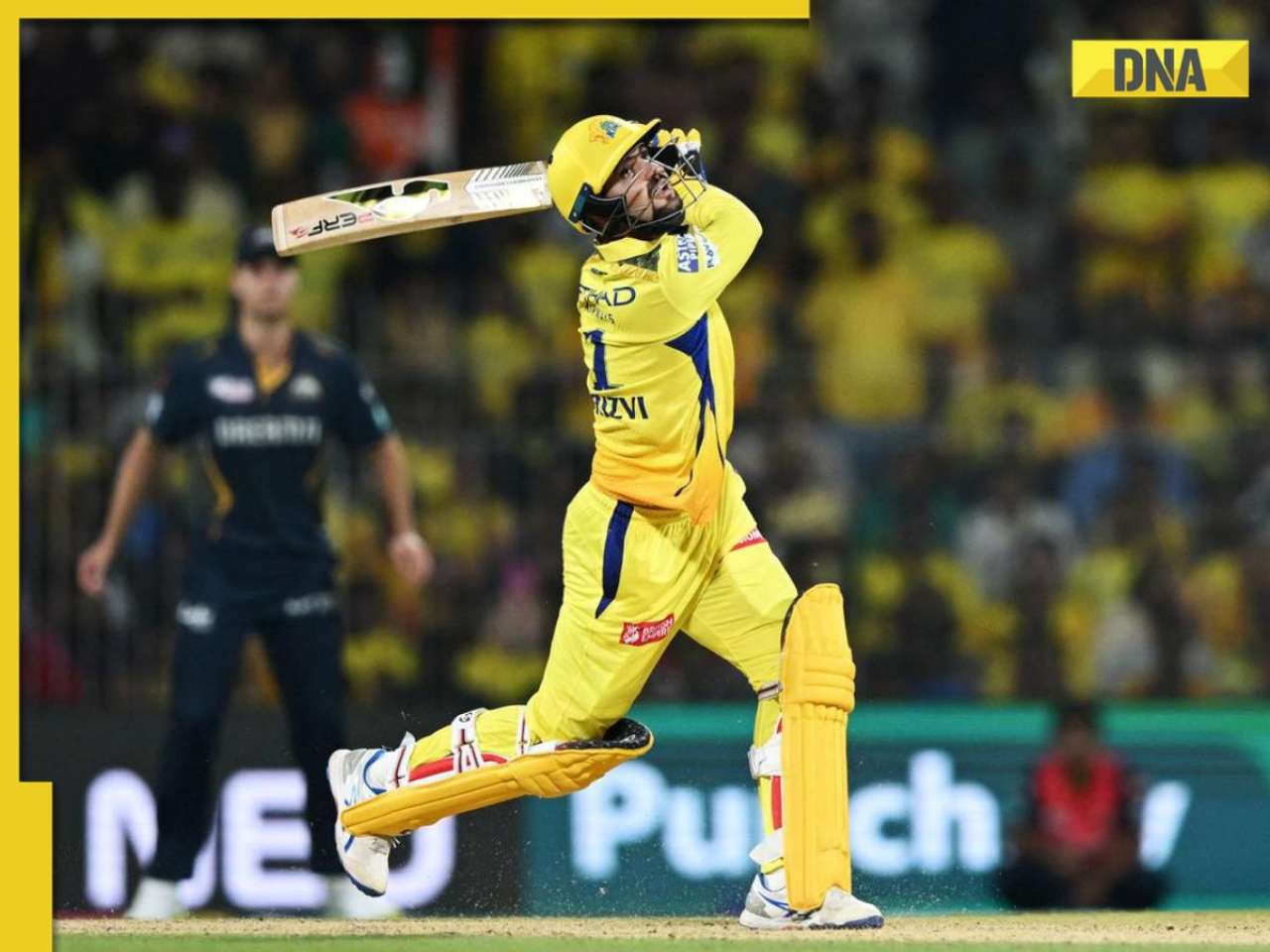
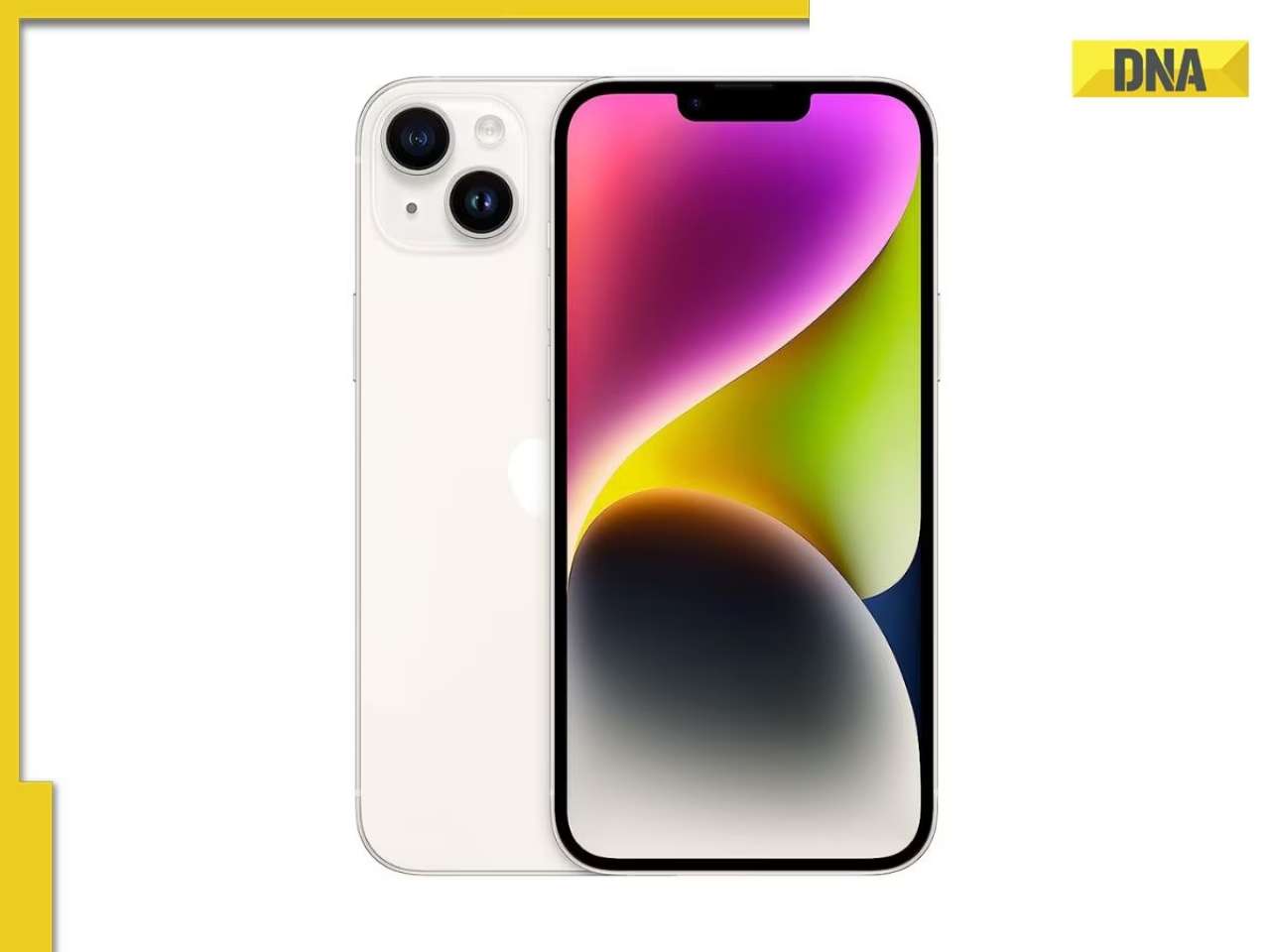














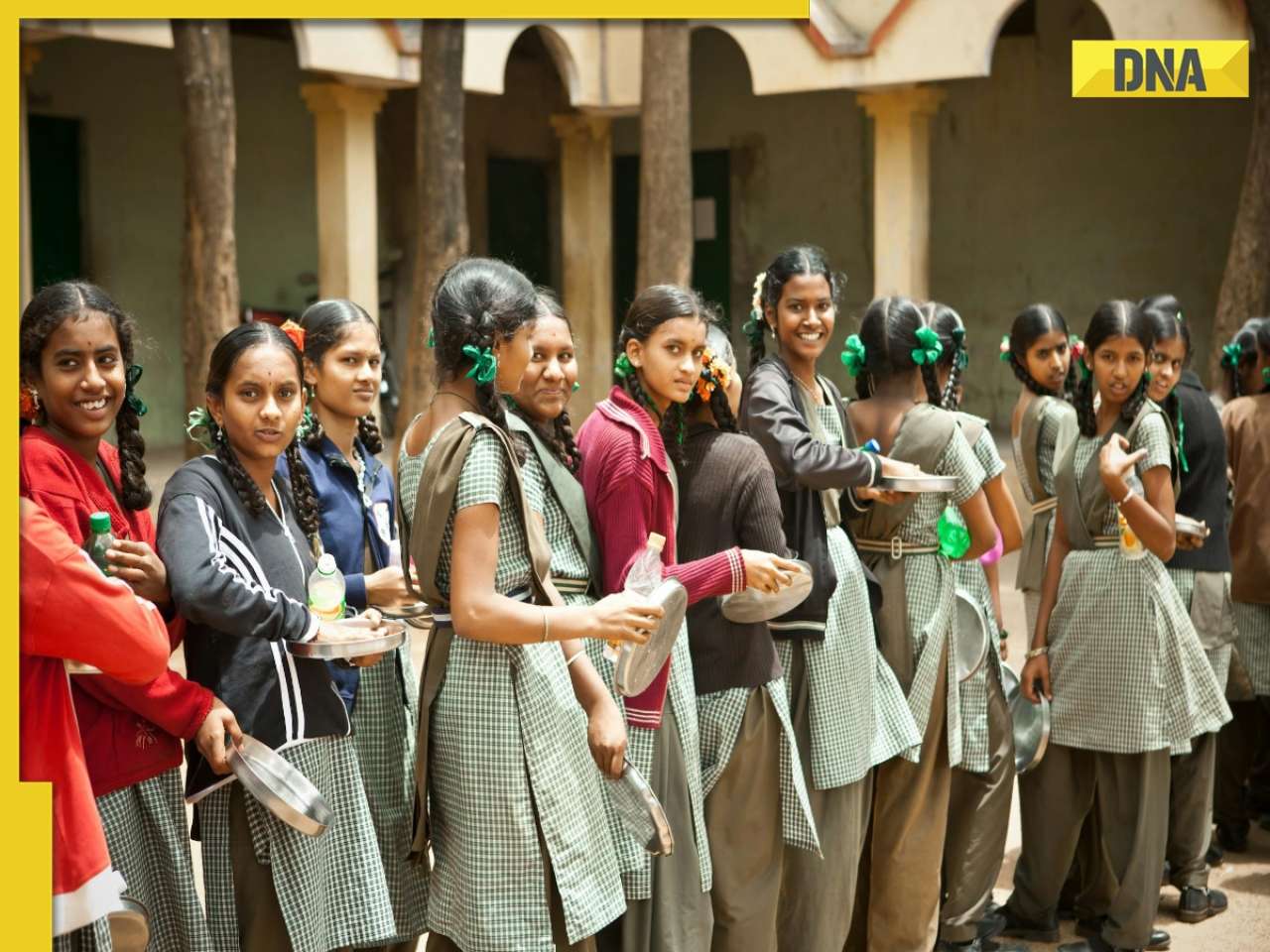
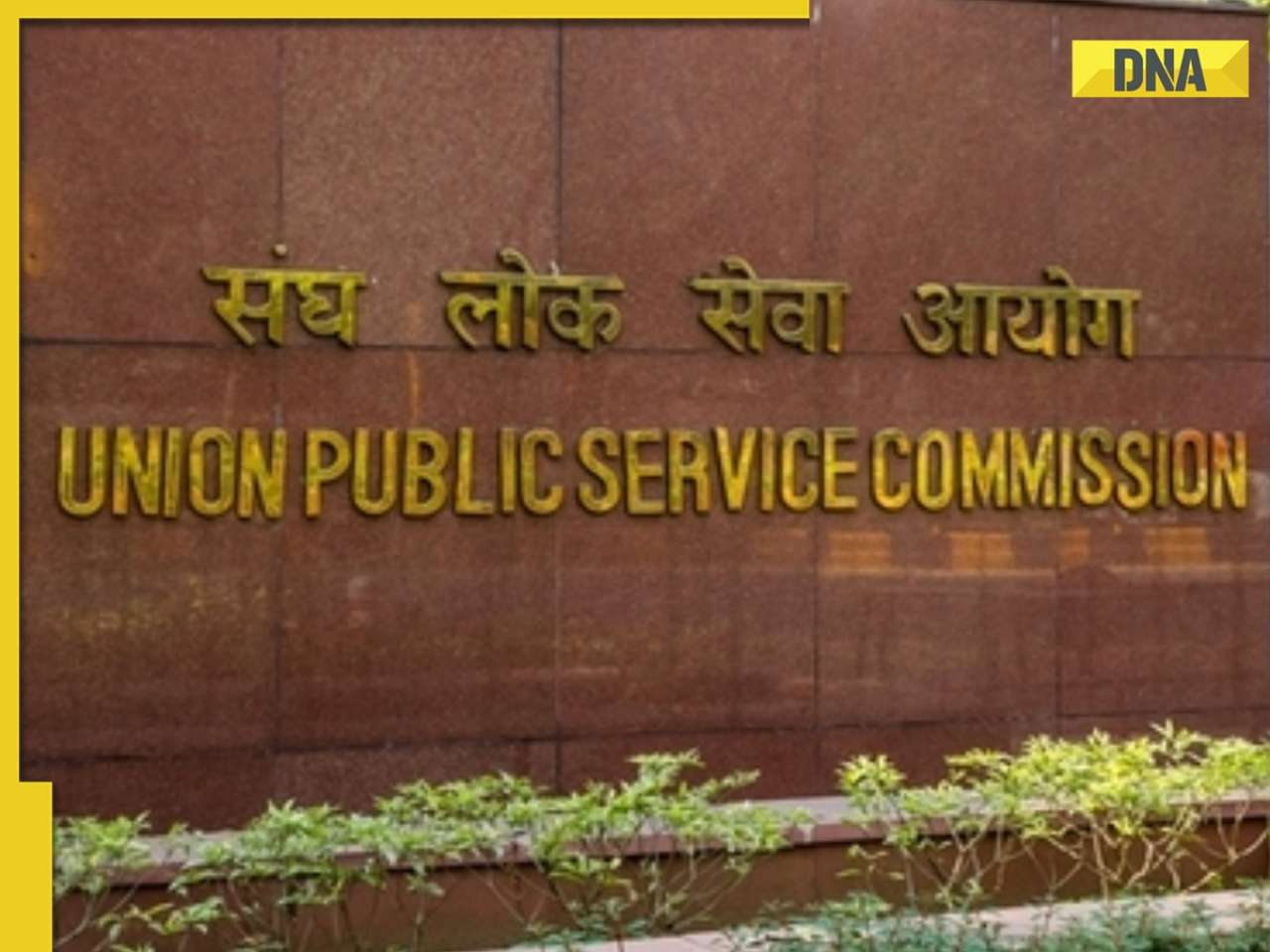


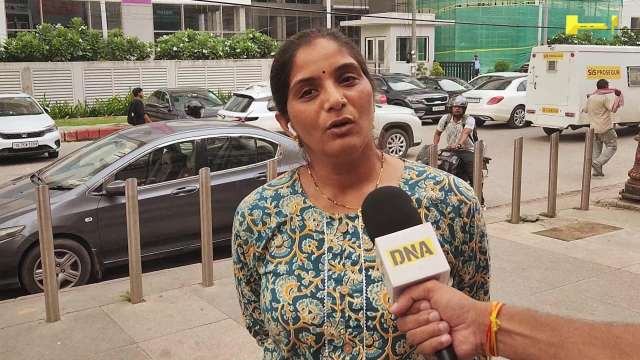

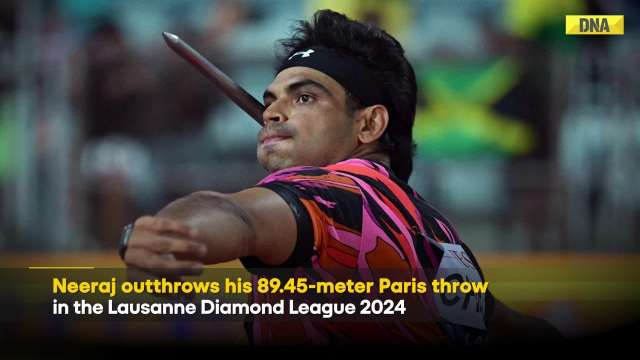


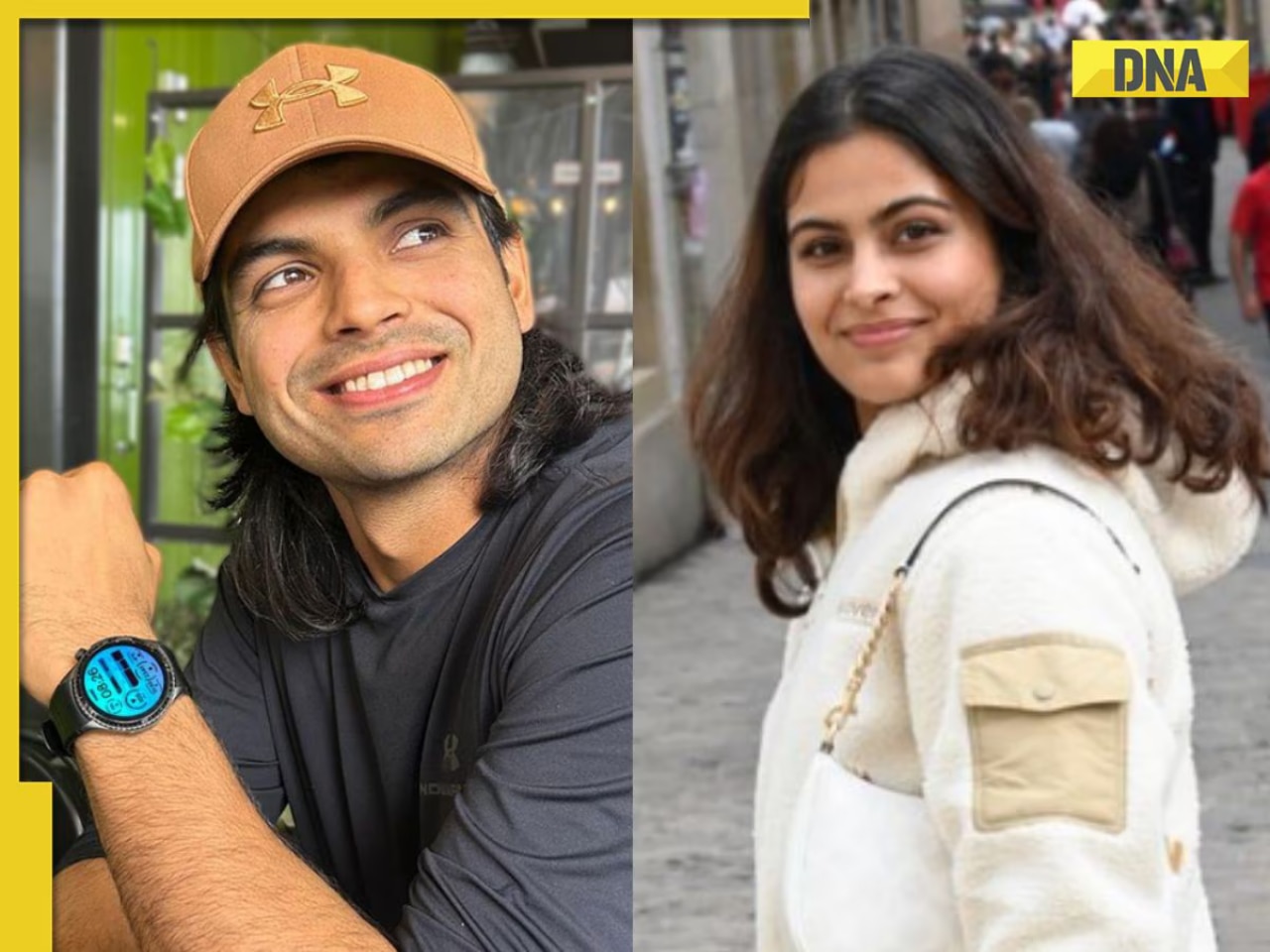
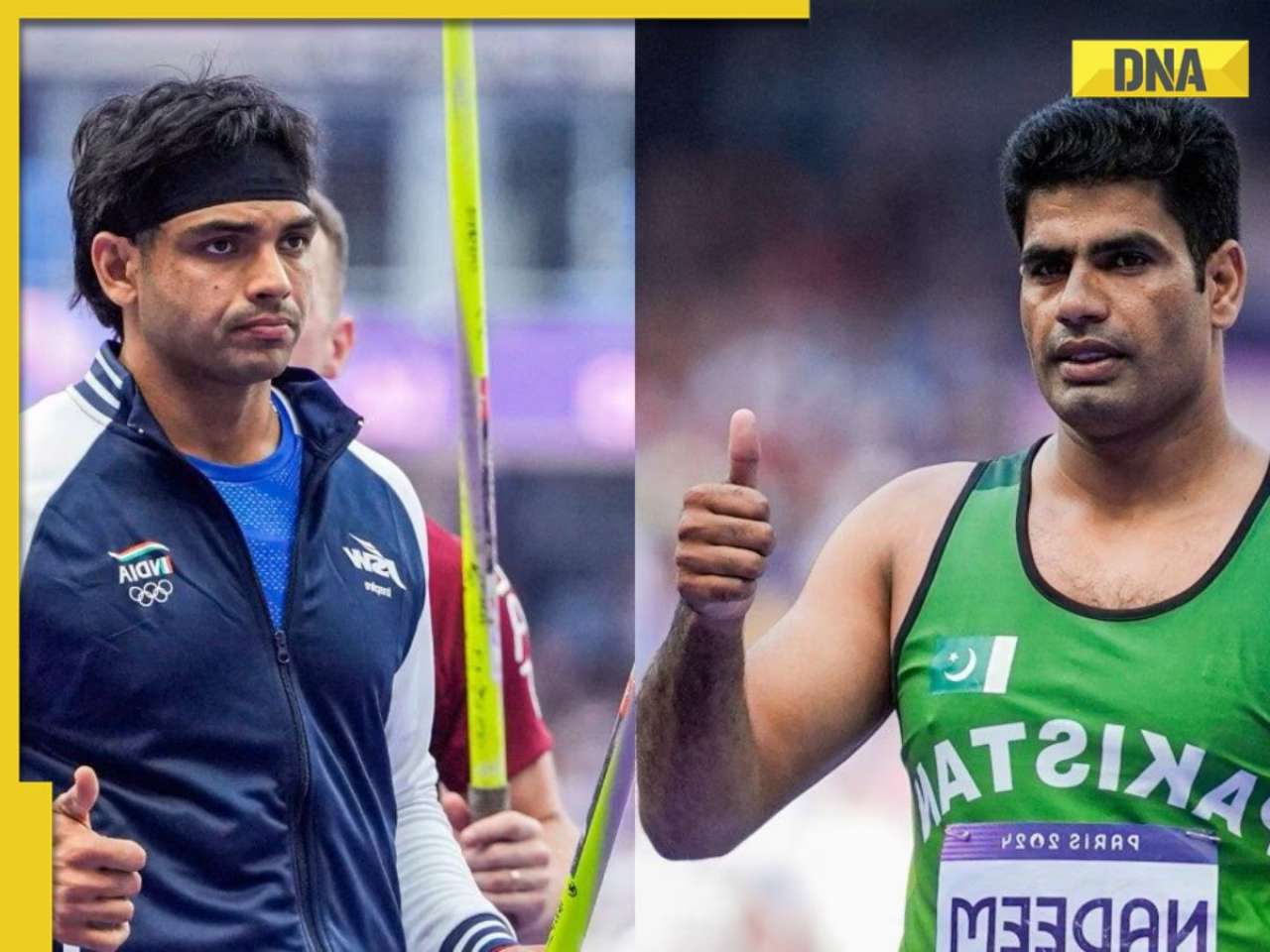













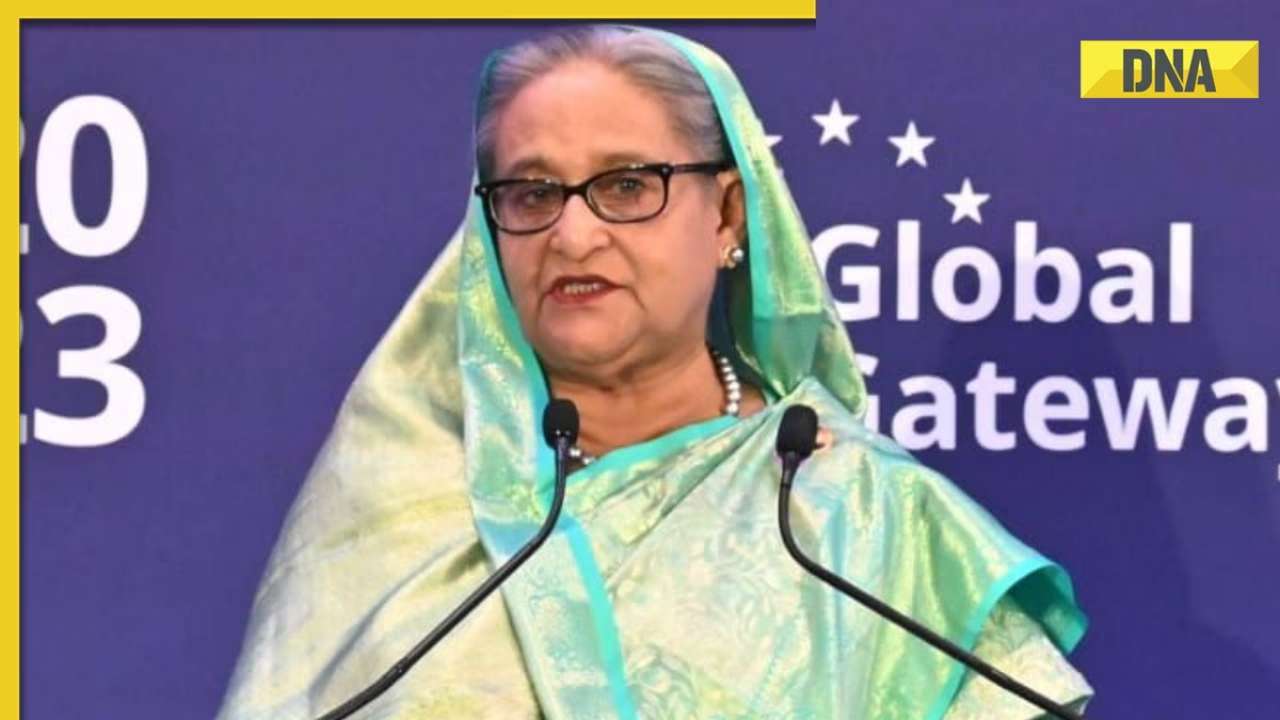



)
)
)
)
)
)
)
)
)
)
)
)
)
)
)







)
)
)
)
)
)